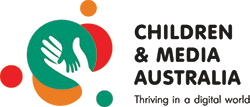EDITORIAL: A post pandemic world of ‘tele-everything’ – what does the digital ‘new normal’ mean for our children? July 4, 2022
By Dr Anthea Rhodes
CMA Board Member
Developmental and Behavioural Paediatrician Royal Children’s Hospital Melbourne
As the fear of COVID and strict government regulations swept across the world, adults and children alike took refuge in the safety of their homes as weeks of stay-at-home rules bled into the best part of two years.
Hauled up for months on end, people turned to the marvel of technology to stay connected, employed and occupied. Many parents relaxed restrictions on screens as a stopgap way to keep frustrated, isolated children engaged and entertained. Living rooms became offices, bedrooms became classrooms and seemingly overnight the screen had permeated every aspect of many people’s lives, especially our children. Almost without warning, and certainly without scaffolding or support, many children were learning and socialising almost exclusively through a screen. And in many cases, they were, quite literally, left to their own devices as parents struggled to work from home, tied to the screen themselves.
Findings from the 2020 Royal Children’s Hospital National Child Health Poll, unsurprisingly, showed 51% of children spent more time on screens for entertainment during the pandemic with many (42%) also spending less time being physically active. In fact, only one in 10 children got enough exercise each day. But it wasn’t all bad news, positive habits were also reported, with the vast majority of children (78%) utilising digital media to stay connected with their friends and extended family. Three-quarters of parents (75%) said their child was able to learn well remotely using digital devices.
Concerns were raised about the risk of increased cyberbullying with children spending so much time online, however early research suggests this did not come to pass, and in fact some studies showed a decrease in online bullying during remote learning. Fears of predators targeting children online during COVID prompted the Australian e-safety commissioner to issue warnings and guides to help parents keep their children safe.
Healthcare took a dramatic turn too, with telehealth consultations previously reserved for people in regional and remote areas requiring specialist care suddenly rolled out for adults and children across the nation. Telehealth became the leading modality of care for children in Victoria, and was found to be highly effective and convenient for families. The majority of parents rated it ‘as good as in-person care’ for their children begging the question do we really need to go back to lining up at the doctor’s office for a sniffle, rash or script.
As a developmental paediatrician I have seen firsthand the negative impact of problematic media use during the pandemic on the health and wellbeing of children. Two years can pass in a difficult blur for adults, but for a child it can represent a whole developmental phase or stage. Some children entered the pandemic as an infant and emerged as a pre-schooler, spending their entire ‘toddlerhood’ in their living room watching YouTube on an i-pad while their parents struggled to work from home. Others have gone from mid-teens to early adulthood with almost no face-to-face socialisation, turning up on site at uni for the first time, a year and a half into their degree. These experiences are developmentally significant and it is clear to most that we need to find a balance between the convenience and vast opportunities of media and technology, and the essential elements of real life interactions.
It is often said that ‘change doesn’t happen overnight’. But perhaps in some cases it does. As we emerge from the pandemic we are undoubtedly changed. As a society, the amplification and acceleration of our digital transformation is perhaps the greatest aspect of that, with many positives to be gleaned as digital literacy levels have skyrocketed from our youngest children through to the elderly. But as with any societal change, inequities have been highlighted, with issues of inclusion and the digital divide magnified by the pandemic. So what does this digital ‘new normal’ mean for our society, and especially for our children, will it be a life of ‘tele-everything’ and more importantly, how do we harness the good and temper the risks? I suppose we could save ourselves some effort and just ‘ask google’. That’s probably what my kids would do.
CMA thanks the Romeo family for its support

About CMA
Children and Media Australia (CMA) is a registered business name of the Australian Council on Children and the Media (ACCM).
CMA provides reviews, research and advocacy to help children thrive in a digital world.
ACCM is national, not-for-profit and reliant on community support. You can help.
ABN: 16 005 214 531
- Home
- Site Map
- Disclaimer
- © Children and Media Australia 2012 - 2025



